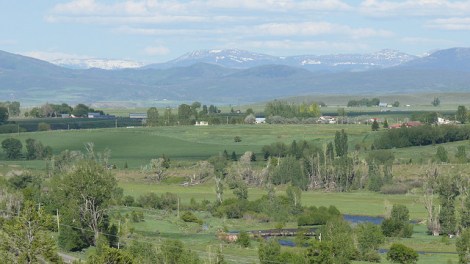As of last week, 95 percent of Colorado was under severe drought conditions. A reminder: It is December.
That’s an improvement since early September, when the entire state was in severe drought. At this rate, the problem will be resolved in … oh, five years.
The effects of the drought have been felt broadly — but the damage done to sheep farmers has been particularly acute.
From The New York Times:
“For the sheep industry, it’s the perfect storm,” [rancher John] Bartmann said, glancing out his office window here at a bleating sea of wool. “The money is just not there.”
Many ranchers are laying off employees, cutting their flocks and selling at a loss, and industry groups said a handful had abandoned the business entirely. Mr. Bartmann has trimmed his flock of 2,000 by one-third. With prices down more than half since last year and higher costs for gasoline and corn, Mr. Bartmann said he expected to lose about $100 for every lamb he sold. …
In a slow-motion disaster, a drought covering more than 60 percent of the country scorched corn stalks into parchment, dried up irrigation ponds and turned farm fields into brittle crust. Farmers begged local governments to let them tap aquifers. Scores of ranchers dumped their livestock at drought auctions.
Farmers say they are still paying near-record prices for corn and hay to feed their livestock through the winter. And if abundant snows do not come to replenish streams and coax new grass from the ground, they worry that next summer could be even worse than last.

J B FosterThe still-green White River Valley, Colo.
The drought struck at a particularly bad time — and as is often the case in food production, Big Ag played a role in how severely it affected ranchers.
The drought withered grazing grounds, killed off young lambs and dried up irrigation ditches, and a glut of meat and imported lambs from New Zealand helped send prices plummeting.
But some ranchers and officials in Washington believe that the deck was stacked against the sheep ranchers by the small number of powerful feedlots that buy lambs, slaughter them and sell them to grocery stores and restaurants. Even as prices farmers received fell to 85 cents a pound, consumers at supermarkets were paying $7 or more a pound for the same meat.
Meanwhile, some of the groundwater that’s left is being polluted by oil and gas extraction. From The Denver Post:
Oil and gas have contaminated groundwater in 17 percent of the 2,078 spills and slow releases that companies reported to state regulators over the past five years, state data show. …
Most of the spills are happening less than 30 feet underground — not in the deep well bores that carry drilling fluids into rock.
State regulators say oil and gas crews typically are working on storage tanks or pipelines when they discover that petroleum material, which can contain cancer-causing benzene, has seeped into soil and reached groundwater. Companies respond with vacuum trucks or by excavating tainted soil.
Contamination of groundwater — along with air emissions, truck traffic and changed landscapes — has spurred public concerns about drilling along Colorado’s Front Range. There are 49,236 active wells statewide, up 31 percent since 2008, with 17,844 in Weld County. …
“There is an impact,” [Colorado Oil and Gas Conservation Commission] environmental manager Jim Milne said, reviewing the groundwater data. “We don’t know if it is unreasonable or not.”
If it helps to clarify, here’s our assessment of unreasonable: a single drop of water polluted with benzene in the midst of an historic drought.
Colorado is increasingly on the front lines of the water wars. As the climate continues to warm and drought conditions become the norm, how states use and conserve water will become issues of life and death.
And not just for sheep.




